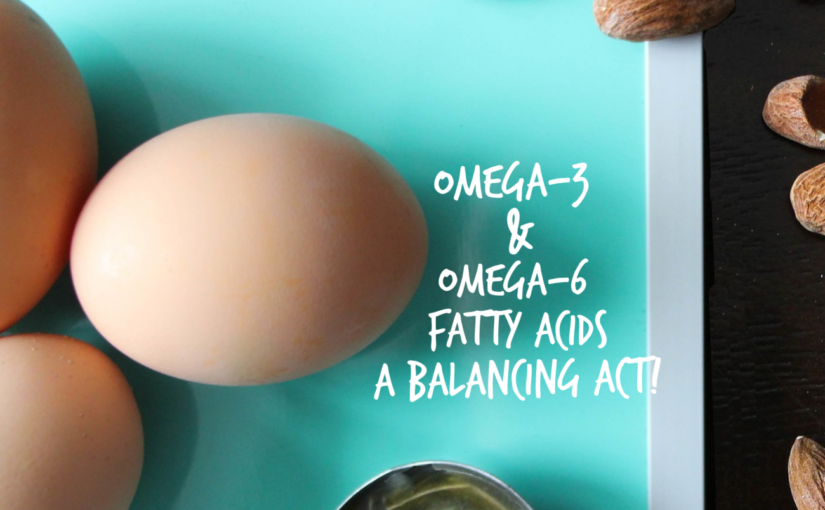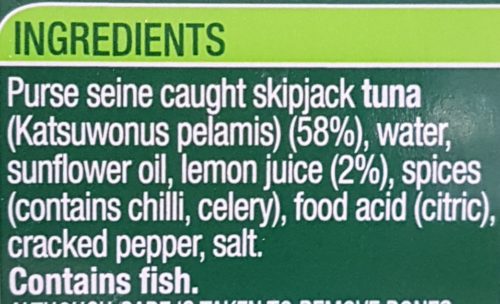Omega 3 and Omega 6 Fatty Acids. A Balancing Act

Omega 3 and Omega 6 Fatty Acids. A Balancing Act
Omega 3 and Omega 6 Fatty Acids. A Balancing Act
Trying to work out what foods we should be including in our diet is a difficult chore. Daily, we see terms thrown around such as inflammatory foods, good fats, bad fats etc., and trying to determine what we should be consuming can get very confusing. We also get lots of conflicting information from different sources as well which just makes it all even harder to understand. You would have heard of Omega 3 and Omega 6 Fatty Acids but do you know what they do and why we need them in our diet?
This article compares two essential fatty acids our bodies require to function and explains why we should try to make sure we have the right balance of these fatty acids in our diet. We constantly hear about these fatty acids in advertisements on food and in the media but did you realise that there was actually a recommended ratio of Omega 3 to Omega 6 fatty acids intake and that an intake of too many Omega 6 fatty acids might actually be detrimental to your health?
Studies have shown that people who eat a non-industrial diet have an Omega-6:Omega-3 ratio from about 4:1 to 1:4, with most people being somewhere in between. The ratio today is about 16:1 which is much higher than what we are genetically adapted to. Reading this article will explain why it is important, particularly from a health perspective, to try to have a more balanced ratio of these essential fatty acids.
Omega-3 Fatty acids
Most of you will probably be more familiar with Omega-3 rich foods such as fatty fish like salmon, tuna and sardines, grass fed meat, as well as nuts and seeds such as linseed, chia seeds and walnuts. Omega-3s are known to be anti-inflammatory and studies show that they can assist in health issues and disorders such as depression, schizophrenia and bipolar disorder, as well as being beneficial in reducing the risk of heart disease.
Omega-6 Fatty Acids
Omega-6 fatty acids, like their counterpart Omega-3, are essential fatty acids that are vital for the body functioning. Some of the known benefits of Omega-6 fatty acids include the fact that they are very important to the functioning of the brain, they assist in helping us maintain healthy bones, they help stimulate skin and hair growth and also help regulate our metabolism.
There is also a link between Omega-6 fats and inflammation. There are however, many different types of Omega 6 fats and not all of them are known to be inflammatory. Some of the sources are actually pro inflammatory. Some great sources of Omega-6 fats include poultry, eggs, nuts (although watch your intake with these as it’s easy to overeat them and they are highly calorific), sesame seeds, pumpkin, sunflower seeds, linseed and sesame seeds.
Inflammation
There can be an issue with some sources of Omega-6 fatty acids and this is where inflammation can become an issue. Some of these fatty acids have had their natural state altered. Chemically speaking, polyunsaturated fats (polyunsaturated fatty acids-PUFA) have more than one double bond in their carbon chain and are effectively missing their hydrogen atom. They have multiple incomplete double bonds which means they are chemically unstable and can be prone to oxidation. Exposure to air, heat, light and moisture can incite an oxidisation process and upon consumption of these foods, can cause the release of free radicals into our systems potentially creating absolute havoc. This is where the real damage from certain PUFA’s can take place. They can cause harm to our bodies and organs, with many studies suggesting links to immune dysfunction, asthmas, arthritis, depression and even cancer.
Why do we consume so many Polyunsaturated Fatty Acids-PUFA’s?
Today, the majority of our intake of these potentially unstable PUFA’s- Polyunsaturated Fatty Acids, generally come from vegetable oil consumption (canola oil, grapeseed oil, corn oil, soybean oil, generic vegetable oil, walnuts oil, cottonseed oil, sesame oil, peanut oil, flaxseed oil and margarine) and our intake of these products is ever increasing.

These cheap, readily available, heavily processed oils are often hidden in many of the processed goods on our supermarket shelves as well. Unless you read labels on foods, you probably aren’t even aware that you are consuming these, and in such high amounts. Have a look at the ingredients label on potato chips, popcorn, tins of tuna, mayonnaise, olives, sundried tomatoes etc., and you will find that vegetable oils are used in most products. This is perhaps the biggest issue for us as consumers of these products as this is possibly where you will be obtaining most of your Omega-6 fatty acids from, in the form of PUFA’s.
How do you get your Omega-6 :Omega-3 ratio more balanced?
The single most important thing you can do is to reduce your Omega-6 intake by avoiding cheap processed seed and vegetable oils high in Omega-6, as well as the processed foods that contain these oils. This is one of the major sources of Omega-6 fatty acids in our diets today and probably the main reason for the imbalance between Omega-3 and Omega-6 fatty acids.
Consuming omega-3 rich foods such as salmon and tuna, a couple of times a week, is an easy way to increase your omega-3 intake. Try to buy grass fed and free range meats and eggs and also try to incorporate linseed/flaxseed and chia seeds into your diet where ever you can. Try to use butter, coconut and olive oil for cooking where you can especially over the oils that I referred to earlier on in this article.
If you are interested in learning more about Omega-3 and Omega-6 fatty acids, these articles might be of interest to you. https://draxe.com/omega-6/ and https://www.brainmdhealth.com/blog/know-fatty-acids-omega-3-omega-6/. This article at Healthline goes one step further and also looks at the role Omega-9 fatty acids have in our lives. https://www.healthline.com/nutrition/omega-3-6-9-overview#section3
I hope you this article has provided you with a bit more clarity around these fatty acids and how important it is to ensure you are getting the right balance of them in your life. I also hope that this article encourages you to read more and become more educated about choices that you make for yourself (and potentially others) as they these can have a huge impact on your health and lifestyle.
Don’t ever take things at face value. Be inquisitive, challenge and question everything you come across. Read, discover and learn….and try to choose a path that is right for a healthier you!!!
Karen
